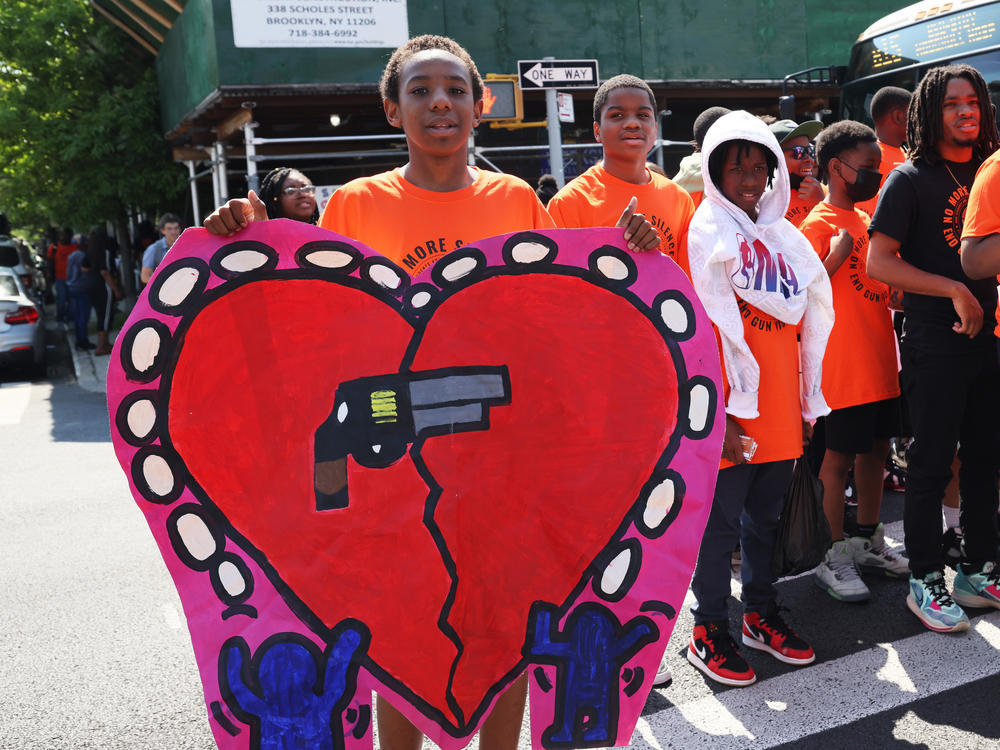Section Branding
Header Content
'Say Something' tip line in schools flags gun violence threats, study finds
Primary Content
"If you see something, say something."
That's not just a slogan for subway stations and airports.
It's also a concept embraced by the Say Something Anonymous Reporting System, started by the non-profit Sandy Hook Promise Foundation. Schools in 23 states have set up an anonymous tip line serving more than 5 million students in grades 6 through 12. The idea is to report unusual behaviors or potential acts of gun violence by other students.
A new study, published in the journal Pediatrics Wednesday, evaluated the tip line as it was used by one southeastern state — North Carolina — to see how successful it was at catching firearm-related threats.
Researchers found there were more than 18,000 tips submitted to the Say Something Anonymous Reporting System, known as SS-ARS, during the four years studied, from 2019 to 2023.
"What we found is that 10% of tips contain reference to a firearm," says Elyse Thulin, an assistant professor at the Institute for Firearm Injury Prevention at the University of Michigan and the lead author on the study. "So youth are turning to SS-ARS to submit information about what can be very highly risky situations."
The research is urgent because gun violence has been the leading cause of death of children and teens in the U.S. since 2020, when it surpassed car accidents.
While the gun-related tips seen in the study also included concerns about bullying, interpersonal conflicts and suicide, 38% were about potential school shootings and nearly a quarter were about seeing or knowing of a weapon.
A separate analysis of the data by the Sandy Hook Promise Foundation shows that the tips and interventions that followed prevented six planned school shootings during the course of the four years.
The tip line also prevented 38 instances of school violence and more than 100 planned suicides. And there were more than 1,000 mental health interventions during this time period, according to the foundation's analysis.
Thulin explains that the system is more than just a phone line. It begins with training a school community, including students and staff, to identify signs of potential violence and self harm. Students can then anonymously report a potential threat through an app, a phone number or a website.
"Youth have a particularly important viewpoint," Thulin says. "They often know much more than the adults do about what's going on in their relationships, and in their school communities."
So they're often the first to notice a concerning behavior or potential threat.
Thulin says when a student reports something to the tip line, it goes to trained crisis counselors at the Sandy Hook Crisis Center, which serves the whole country and is open 24-7 all year round.
"These individuals are trained to live triage the tips," Thulin says. "Teens can actually have a conversation with a crisis center counselor live. And the average report or the average response time is under a minute."
The crisis counselors engage with the tipster to get as much information as possible, figure out if there may be an immediate threat to anyone's safety, and then loop in relevant school staff about the level of intervention needed.
If the tip is about an imminent threat, then they also loop in local law enforcement and possibly an emergency medical team.
"We found that 50% of the time that tips containing a firearm were requiring that urgent response," Thulin says. That's significantly higher than for non-firearm related tips.
Thulin and her colleagues chose to study a state where the tip line is available in all school districts. They did not name the state in their research, because they were concerned knowledge of the ongoing study could influence students' willingness to use the tip line. Other sources, including the Sandy Hook Promise Foundation and the state itself, identify it as North Carolina.
Beverly Kingston, who directs the Center for the Study and Prevention of Violence at the University of Colorado, Boulder, wasn't involved in the study, and says its findings are heartening.
"It demonstrates that anonymous reporting systems can be a useful and a practical intervention or strategy to address gun violence and other concerning behaviors," Kingston tells NPR.
Kingston, who's involved in supporting Colorado's anonymous youth tip line called Safe2Tell, says these findings come at a time when gun violence has become a major public health problem.
According to a new report by the National Institute for Health Care Management Foundation, more than 42,000 people died from gun related injuries in 2023.
"In a country that has the level of firearms that we have, we need to have anonymous reporting," says Kingston. "It's a system that should be everywhere."
Kingston sees the findings as something actionable states can do on an issue that is too often stuck in polarizing politics. "There's a lot of hopelessness, people thinking that there's nothing we can do to prevent violence," she says. "And there's so much we can do."
If you or someone you know may be considering suicide or is in crisis, call or text 988 to reach the Suicide & Crisis Lifeline.
Copyright 2024 NPR. To see more, visit https://www.npr.org.

